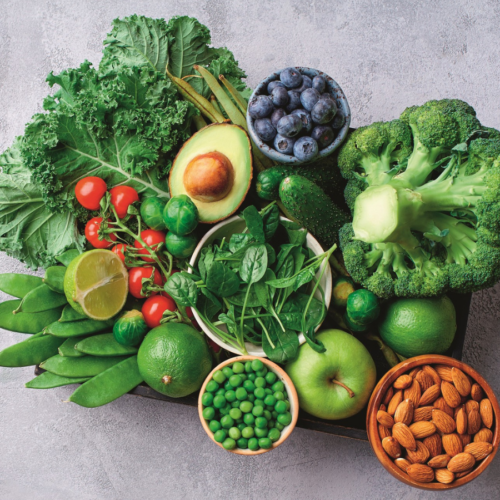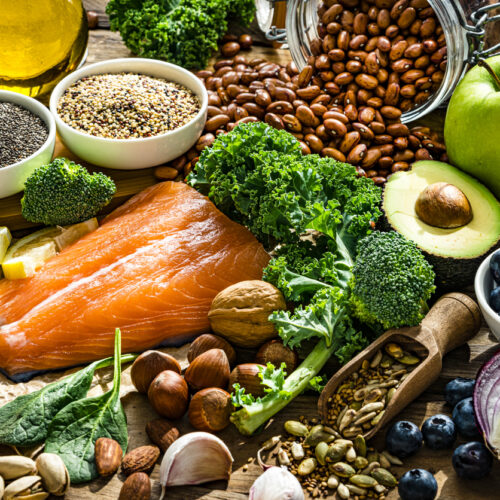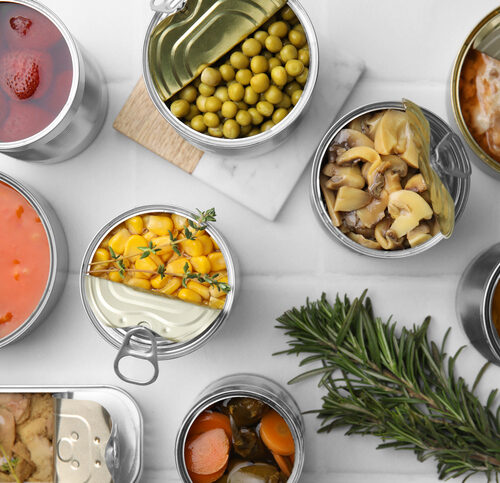
Have you been shocked by the total you’ve managed to rack up at the checkout lately? Here are 36 ways you can save money NOW, from Sophie Gray and HFG’s team of experts.
Section 1: Plan ahead
1. Plan a weekly menu
Plan your week’s meals in advance, before you shop. Match meals with busy nights and special occasions. This means you won’t have to resort to buying breakfast on the way to work or school, or fast food on the way home.
• Dinner at home: $4 per person
• Takeaways: $10 per person
• Save $24 (based on four people)
2. Shop with a list
A decent list is a stress buster – you don’t worry about forgetting something or have to plan your week as you walk down the aisles. Often, forgetting something while you shop means you have to pick it up at the corner shop or petrol station later – and you’ll usually pay far more. Your list will also help stop impulse buys and buying too much produce that looks good but you’ll never get around to eating. If you forget the cheese:
• 500g block in supermarket: $8
• 500g block at dairy: $12
• Save $4
3. Use supermarket flyers
Supermarkets discount products from 10% to 50%, so don’t throw out that flyer! As you plan your meals for the week and make your list, take note of the specials and choose your dishes to make the most of the discounts.
• Meat: $16 per kilo
• On sale: $12 per kilo
• Fruit: $7 per kilo
• On special: $5 per kilo
• Save $6+
4. Shop around
Try buying bread from the baker, meat from a butcher and veges from a greengrocer. These shops often have excellent special deals.
• Supermarket chicken breasts: $19 per kilo
• Mad Butcher chicken breasts: $13 per kilo
• Save $5
5. Know your essentials
Keep a master list of essential items – tinned tomatoes, pasta, rice, tins of tuna, cleaning products, toiletries — in your pantry and refer to it when planning your menu and making your list. Make the most of sales or bulk buying opportunities on these items. Keep an eye on your supplies to make sure you always have them on hand, but use them up before they reach expiry.
• Pasta regular price: $3.50
• On sale: $2.50
• Save $1
6. Price your recipes
Work out how much your favourite recipes cost to make by checking your receipts and dividing the ingredients total by the number of serves. Prices fluctuate; if your menu changes to cover this, you will save money. Try adding some new healthy recipes to your repertoire: check the cost per serve in all HFG recipes and take your pick!
• Average recipe: $8 per serve
• Use low-cost recipes from HFG: $3 per serve or less
• Save $20
Weekly savings this section: $60
Section 2: Make a change
A few small changes to your usual habits can mean you save money and eat healthier.
7. Snack smart
Instead of heading for the vending machine, plan your snacks into your weekly shop. If you’ve got a sweet tooth, try buying a packet of choc chip cookies and dividing them into two-cookie portions to eat instead of that daily chocolate bar.
• Packet of biscuits: $2
• 5 chocolate bars: $10
• Save $8
8. Use spray oil
Invest in an oil spray bottle; you’ll cut down on the oil you use, and go through your olive oil more slowly.
• Olive oil bottle: 24c per tablespoon
• Olive oil spray: 8c per spray
• Save $8+
9. Drink healthily
Save money and get the added benefit of losing weight by switching from juice to water as your family’s main beverage. Start by diluting your juice and gradually increase the amount of water.
• Juice 3L: $4.80
• Tap water: FREE
• Save $4+
10. Go alcohol-free
Nutritionists often reccomend we have at least two alcohol-free days each week to stay healthy and lean.
• 4 glasses of wine at home: $9+
• 4 glasses of wine at a bar: $24+
• Save $9+
11. Think bulk on regular purchases
It can be cheaper to buy often-used basics like rice, flour and sugar in bulk. (But do the sums; it’s not always the case.) Store in airtight containers in the pantry. Cut the expiry date off the packaging and pop it in too, so you can keep track of freshness.
• 1 kg rice: $2.20
• 10 kg rice: $17.00
• Save $5
12. Keep your fridge working for you
If you have two vege drawers, use one for new produce and the other for old. Each time you buy ‘new’, transfer more to the older drawer. The goal is to get through the older stuff first.
• Save $5+
Weekly savings this section: $39
Section 3: Waste not…
Think differently about how you use your food and you’ll spend less, throw less food away and have a more sustainable kitchen.
13. Use your freezer
Get the most out of wine, lemon juice, stock, tomato paste, pesto etc by freezing unused portions in an ice cube tray or ziplock bag. Leftover pasta sauce and coconut milk freeze well, too.
• Chicken stock $2-4
• Save $2-$4
14. Make the most of leftovers
Extend leftover casserole or stir-fry by wrapping in filo, topping with potato or encasing in a wrap. See Spend less: Waste not, want not for lots of creative ways to make last night’s leftovers into tonight’s delicious dinner.
• Dinner from scratch: $4 per person
• Dinner from leftovers: $1 per person
• Save $12
15. Date it
Keep on top of what’s still fit to eat and avoid throwing mystery products out by investing in a permanent marker. Keep a few sheets of sticky labels in your kitchen drawer and stick them on your freezing containers. When you pop meat or leftovers in, make a note of the item and date on the container.
• Throwing out 1kg of chicken: $13+
• Save $13+
16. Store the surplus
Make maximum use of your freezer: freeze leftover herbs, chopped celery, halved and seeded peppers and chillies when they’re cheap. They’re perfect for stews, casseroles and pasta sauce. Consider getting into bottling fruit, making jam, chutney and sauces to stock your pantry with super-cheap and tasty basics.
• Capsicums frozen in season: 50c each
• Capsicums from supermarket out of season: $3 each
• Save $5
17. Add a few special ingredients
A stir-fry that uses a particular sauce may seem pricey the first time you make it, but once you’ve got the sauce on hand it may be very cheap the next time. The trick is finding ways to use up special ingredients so you don’t end up throwing them away. Experiment and have some fun.
• Throwing away half-full forgotten sauce: $6
• Save $6
Weekly savings this section: $39
Section 4: Cook smart
Spending a little more time thinking about what and how to cook can mean cheaper – and healthier – meals.
18. Review your menus
Replacing one meat-based meal a week with a pulse-based meal (beans, lentils, chickpeas) is a healthy choice that will save you money. Over a month the saving can be used on better quality meat or other special ingredients.
• Beef chilli: $5 per serve
• Vege chilli: $3 per serve
• Save $8
19. Change your meal base
Use rice, pasta, potatoes, noodles and lots of seasonal produce as the base of your meals, and add a modest amount of protein – meat, fish, chicken or eggs. 100g of meat per person is ample in combination with other things.
• 800g chicken: $13
• 500g chicken: $8
• Save $5
20. Quality not quantity
A little bit of a good-quality ingredient can make the world of difference to an otherwise humble dish. One or two well-flavoured sausages will enrich a whole risotto, cassoulet or pasta sauce. See page 62 for a tasty example.
• 6-pack of average sausages for one meal: $2.80
• 6 quality venison sausages for two meals: $ 4.08
• Save $1.50
21. Make 1 meal into 2
Start tomorrow’s lunch while you make tonight’s dinner: cook a few extra veges and extra pasta; add salad greens and a dressing for a cheap and tasty pasta salad for lunch.
• Buying lunch: $7-10
• Bringing lunch: $1-2
• Save $8
22. Extend your mince
Make mince dishes go further by adding cooked red lentils to dishes like bolognese, chilli and meatballs. It will make the meal healthier by boosting your fibre and reducing your fat intake.
• Meat-only bolognese: $6 per serve
• Add lentils: $3 per serve
• Save $12
23. Stay in season
Combine seasonal produce with staples like flour, eggs, milk, cheese and canned fish for an endless variety of delicious and economical meals. Think soups, frittatas, curries, stir-fries, pasta and risotto.
• Out of season asparagus: $8
• In season asparagus: $2
• Save $6
24. Eat your beans
Dried beans are super cheap, and canned beans are super convenient. Both are extremely versatile and can be the base for tasty, nourishing and cheap meals. Red kidney beans are great for Mexican dishes; mix with mince for a tasty chilli or make into bean burgers. Cannellini and butter beans can be the base for salads; mash with oil and herbs and use instead of potatoes,
and add to soups.
• Chicken tacos: $4 per serve
• Bean tacos: $2 per serve
• Save $8
25. Make sauce
Make pasta sauces in bulk and bottle or freeze for future use – use fresh or canned tomatoes, and simply simmer with onions and herbs until it reaches your preferred consistency.
• Pasta sauce in a jar: $3.25
• Homemade pasta sauce: $1 or less
• Save $2
26. Get creative with salad
Who said salad has to be lettuce? Grated carrot and apple makes a good base when lettuce is expensive, or try a selection of sprouts as a base. And don’t forget coleslaws; use red and green cabbage and apple, but use yoghurt or half yoghurt and half mayonnaise instead of regular mayonnaise.
• Lettuce salad: $3.50
• Cabbage, carrot and apple salad: $1.50
• Save $2
27. Go international
Branch out and take inspiration from the rustic cuisines of Italy, Spain, Greece and Morocco. Dishes like paella, risotto, pizza, tagine and moussaka are not the traditional meat and three veg, but they are delicious and very economical to make.
• Steak and salad: $6 per serve
• Moussaka and salad: $3 per serve
• Save $12
Savings this section: $64
Section 5: Do it yourself
DIY in the kitchen can be financially rewarding and fun!
28. Grow your own
Fresh herbs are expensive to buy, but they’re easy and cheap to grow and you’ll have a year-round supply to add interest to your cooking. Even a tiny apartment can be a garden – all you need is a balcony and a pot.
• Fresh packaged herbs: $4+
• Home-grown herbs: FREE once planted
• Save $8+
29. Make soup
Soup is a delicious, economical meal. An onion, some chunks of seasonal vegetables and stock is all you need. Most soups freeze well and are great as winter work lunches.
• Bought soup pouch (serves 2): $5
• Homemade soup (serves 2): $1
• Save $8+
30. Add spice
Tasty, well-seasoned food is much more satisfying. Mix your own spice blends and store in airtight containers – use as a seasoning, spice rub or sprinkle. Experiment with your favourite flavours.
• Jar of Moroccan spice blend: $4
• Homemade spice blend: $1
• Save $3+
31. Make it yourself
Don’t be scared to make things from scratch. Many ‘ready-made’ items are simple and quick to make: think pasta sauces, gravies, seasoning mixes, salsas, dips, pastes, pizzas and soups.
• Salsa in a jar: $3
• Homemade salsa: $1
• Save $2
Savings this section: $21
Section 6: Shop smart
A bit of planning and trying not to be in ‘auto pilot’ mode in the supermarket will pay off in savings.
32. Don’t shop too often
Topping up during the week is a budget breaker and a sure-fire way of impulse buying. Pick a time to shop and stick to it, and don’t shop when you’re hungry. If you’re taking the kids, that goes double for them!
• Stick to list: stick to budget
• Impulse and top-up buys: $5 – $20
• Save $5+
33. Shop online
Buying online takes away the temptation to pop something extra in the trolley and lets you see your running total. Once you reach your budget, you can delete or exchange for cheaper varieties. Very few people feel they can leave things behind at the checkout, but deleting online is easy.
• Shop online: Stick to budget
• Shop in store: From $5 – $20 over budget
• Save $20+
34. Hand-pick your produce
Where possible, select individual items by hand. A sealed tray of food may conceal nasty surprises in the bottom that you’ll have to discard. Choosing this way allows you to pick fruit and veges at various stages of ripeness. You can choose soft tomatoes and avocados for today and firm ones for later in the week. You’ll use less packaging, too.
• Buying mushrooms once: $5
• Buying them twice: $10
• Save $5
35. Don’t buy too much produce
Many of us can identify with the moment of reckoning when we throw out the sad looking fruit and veges at the end of the week. Only buy what you realistically know you’re going to get through, based on your weekly menu. You can always top up with frozen or canned veges.
• Throw out 1/2 kilo of fruit and veg: $5+
• Save $5
36. Use discount cards
Sign up with your local store’s loyalty programme. Those little discounts do add up. Bakers Delight and other specialty stores also offer loyalty deals.
• Save $2+
Weekly savings this section: $37
Put it to the test – how will YOU save?
Healthy Food Guide reader Rachel Millward put our budget ideas to the test and saved her family of four $50 in a week!
Tips 1 and 2
I planned a weekly menu then did one big shop. I forced myself to stick to it, and it was great. I actually cooked three dinners one day when both of my boys were sleeping and I was feeling energetic. I normally couldn’t have done this as I would’ve needed to top-up shop. The next night I only needed to cook pasta.
• Saved $20
Tips 4 and 25
I got some really cheap tomatoes at the fruit and vege shop, so I made up a big pot of tomato pasta sauce. I used some that night and the rest I froze in containers to use for future meals. I made at least four jars’ worth.
• Saved $9
Tip 22
I added a cup of red lentils when I made a casserole and it basically doubled the recipe. I froze the leftovers and we had it again later in the week.
• Saved $7
Tip 24
I made soup from my leftover veges. I hate to admit it, but I often throw out veges. So I made up soup at the end of the week, froze it in small containers and convinced my husband to take one for lunch. He liked it so much he wanted it again the next day, instead of buying lunch.
• Saved $14
Total weekly savings: $50
Our top 10 tips
Pick 4-5 from this list and challenge yourself to save:
- Plan a weekly menu
- Price your recipes
- Think bulk
- Use your freezer
- Make the most of leftovers
- Change your meal base
- Stay in season
- Grow your own
- Make it yourself
- Shop online
HFG picks – budget savers we love
Tinned tomatoes
These can bulk up any casserole or soup, help you get your daily dose of veges, and form the base for countless meals.
Powdered stock
The flavor and quality of these have really improved in recent years. Look for reduced-salt varieties.
Red lentils
Add these to everything from spaghetti bolognese to soups and casseroles, to serve more and boost your fibre.
Light evaporated milk
Another canned staple. Use instead of cream to makeover less healthy recipes. Can also be made up into regular milk if you run out.
Plastic storage containers
Good storage increases the life of your food. Invest in a good collection of different-sized containers for storing food in the pantry, fridge and freezer.
Oats
Make your own muesli, add to smoothies, use in baking; the uses for the humble oat are endless.
Olive oil spray
Versatile and good value, because you’ll use less oil without sacrificing flavour.
Canned fish
Tuna, salmon and sardines are a fantastic and inexpensive way to get more of this healthy food. Look out for specials.
Frozen fish fillets
These are versatile (cook them straight from the freezer) and often cheaper than fresh fish.
Canned chickpeas and beans
Extend any meal or use as a base. They’re full of fibre and make great soups, dips and mash in a flash.
Food covers
These shower cap-like covers fit all sorts of dishes and can be re-used, so you don’t need plastic wrap.
Rice
Buying rice in bulk is cheaper, and you can cook it and freeze it in handy portion sizes, too. Never pay $2 per person for rice for takeaway again. Don’t forget the risotto rice, too.
Dried soup mixes
Soup made using these mixes works out at a few cents a serve, and it’s yummy too.
Frozen veges
Get them on special and buy only enough fresh vegetables to get through the week. If you run out, you’ll have these on hand. (They’re just as good for you as fresh!)
Pasta
Look out for the specials and always keep in the pantry; it’ll last for ages and can make a meal out of a very few ingredients.
Filo pastry
Turn leftovers into another meal by wrapping them in filo, or scrunch on top of a pie.
All our savings are based on a weekly saving for a family of four @ May 2008.
www.healthyfood.com










